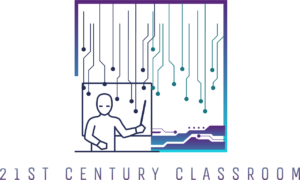Classroom management is a critical aspect of effective teaching. It sets the tone for learning, establishes a productive environment, and ensures that students can focus on their studies. In this article, we will delve into the art of mastering classroom management. Educators play a pivotal role in shaping the future of their students, and by mastering the strategies and gaining insights into classroom management, they can create an environment conducive to learning and personal growth.
I. Understanding the Importance of Classroom Management
To begin our journey into mastering classroom management, it’s essential to grasp its significance. Classroom management is not about controlling students but about creating an atmosphere where learning can flourish. Here, we will explore why classroom management matters and how it impacts both teachers and students.
II. Building a Strong Foundation
A. Setting Clear Expectations
One of the fundamental aspects of classroom management is setting clear expectations. Educators should communicate their classroom rules and expectations right from the start. This not only provides structure but also helps in preventing discipline issues.
B. Establishing Rapport
Building positive relationships with students is crucial. When students feel respected and valued, they are more likely to respect the teacher and the rules of the classroom. Strategies for building rapport with students will be discussed in detail.
III. Proactive vs. Reactive Management
A. Proactive Strategies
Proactive classroom management focuses on preventing behavior issues before they arise. Educators can implement various proactive strategies such as classroom layout, seating arrangements, and engaging lesson plans.
B. Reactive Strategies
While proactive strategies are essential, educators must also be prepared to handle situations when issues do occur. We will discuss effective techniques for addressing disruptive behavior and conflicts in the classroom.
IV. Effective Communication
A. Verbal and Non-Verbal Communication
Communication is at the heart of classroom management. Educators need to master both verbal and non-verbal communication to convey instructions, expectations, and feedback effectively.
B. Active Listening
Active listening is a skill that can transform classroom dynamics. By genuinely listening to students, educators can gain insights into their needs and concerns, fostering a positive and inclusive environment.
V. Time Management
Time management is a key component of classroom management. Educators must allocate their time efficiently to cover the curriculum while addressing individual student needs. Strategies for optimizing time in the classroom will be explored.
VI. Flexibility and Adaptability
In a dynamic learning environment, educators need to be flexible and adaptable. This section will discuss how to adjust classroom management strategies to meet the needs of different students and situations.
VII. Self-Care for Educators
Taking care of oneself is often overlooked but crucial for effective classroom management. We will explore the importance of educator self-care and provide tips for maintaining a healthy work-life balance.
VIII. Learning from Experienced Educators
In this section, we will share insights and stories from experienced educators who have mastered the art of classroom management. Their real-world experiences and advice will provide valuable lessons for aspiring educators.
Takeaway
Mastering the art of classroom management is an ongoing journey for educators. By understanding its importance, building a strong foundation, using proactive and reactive strategies, communicating effectively, managing time wisely, and practicing self-care, educators can create a positive and productive learning environment for their students. As we conclude this article, remember that classroom management is not just about maintaining order; it’s about inspiring and nurturing the future leaders and thinkers of our world.

